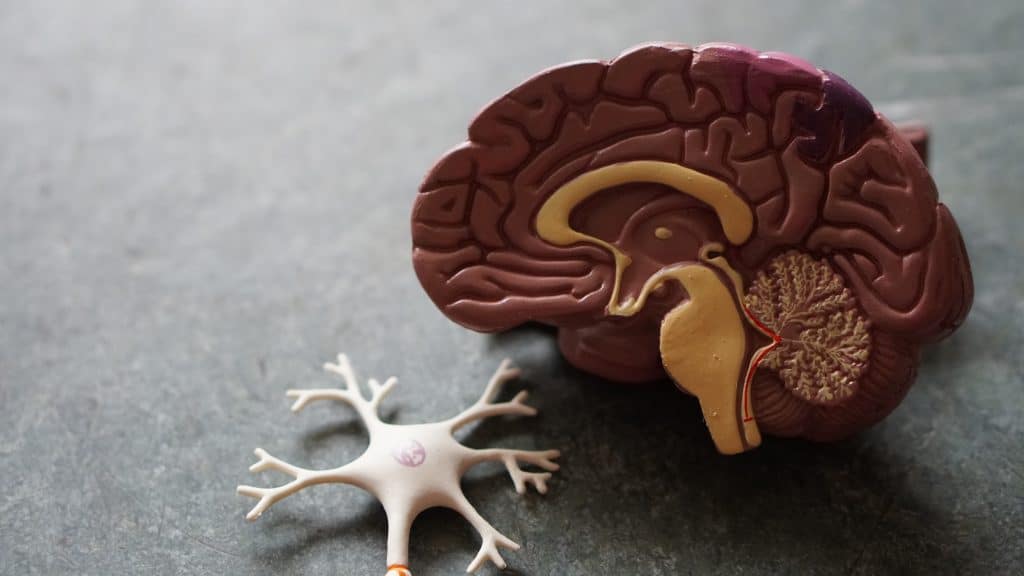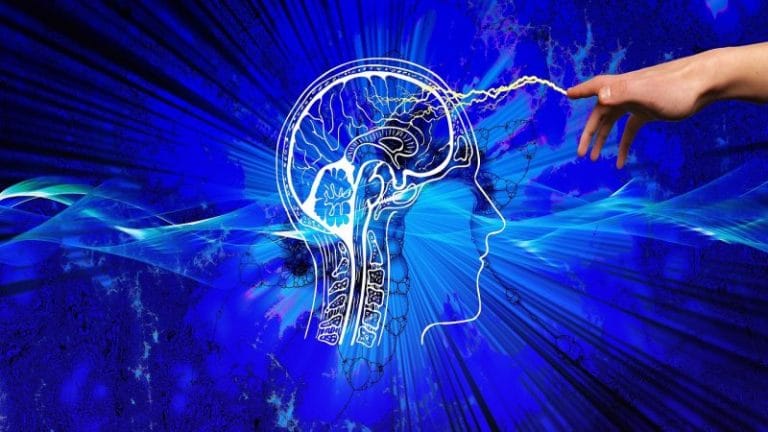35 Elaborate Schizophrenia Statistics and Facts for 2024

Schizophrenia is a severe mental disorder. Its characteristics include delusional ideas, false beliefs, and disordered thinking. Despite affecting a handful of the population, schizophrenia statistics reveal how serious it is. The disorder impacts every aspect of one’s life, health, and daily activities.
To help you better understand this condition, we put together some essential facts and stats. Let’s take a look!
Top Ten Schizophrenia Stats to Know in 2024
- Around 20 million people in the world have schizophrenia.
- Based on schizophrenia statistics by state, California has the highest number of adults with this condition.
- There are four types of schizophrenia.
- Around 50% of individuals living with schizophrenia have a history of substance abuse.
- African American patients are three to four times more likely to be diagnosed with psychotic disorders.
- Around 5% to 6% of schizophrenia patients die by suicide.
- Total (direct and indirect) costs of schizophrenia amount to nearly $63 million a year.
- There is no cure for schizophrenia.
- 20% of people with schizophrenia will recover within five years from experiencing the first symptoms.
- Interesting facts about schizophrenia point out that high doses of vitamin B can considerably reduce the symptoms.
Schizophrenia Prevalence Statistics
[visualizer id=”96736″]
Schizophrenia, like other mental disorders, is found in almost every country in the world. But just how much of the population is living with this condition, and which countries are most affected?
Read on to find out.
1. Schizophrenia statistics by state show that California has the most adults with this condition.
(The Treatment Advocacy Center)
With 335,242 adults diagnosed with schizophrenia, California has the highest incidence. The 2017 Census data also shows that Texas is second with 230,324 cases and Florida comes third with 184,607. On the other hand, Wyoming has the lowest prevalence rate of schizophrenia—only 4,871 cases in 2017. Sadly, 1,948 of those cases were untreated.
2. Around 20 million people in the world have schizophrenia.
(WHO)
To begin with, schizophrenia has direct links to cognitive, perceptive, and emotional disruptions. The main symptoms are hallucinations, delusions, and disorganized behavior (or speech). Another symptom is emotional disturbances. In other words, there is a disconnection between the emotions reported and corresponding body language.
3. Around 1.2% of Americans have this disorder, schizophrenia statistics for the US report.
(MentalHelp.net)
That translates to about 3.2 million American adults who have schizophrenia. That said, it’s difficult to determine the exact number of individuals living with schizophrenia in America. That is mostly because of its complexity and because it overlaps with other conditions. Namely, it might overlap with substance abuse, bipolar disorder, and multiple personality disorder.
4. At one time, around 220,000 people get treatment for schizophrenia.
(Living With Schizophrenia)
According to schizophrenia statistics in the UK, the disorder is a major health concern. It affects every aspect of one’s life, including the ability to work. In fact, only 13% of schizophrenia patients in the UK do some work.
5. In Latin America, Chile had the highest share of years lived with disability due to schizophrenia.
(Statista)
According to 2018 schizophrenia statistics by country, Chile contributed to 2.1% of all YLDs—the highest share of all the countries in the region. It’s followed by Argentina and Uruguay, which contributed to 1.9% of all YLDs. Haiti is on the other side of the spectrum—it had the lowest share at 1.1% of all YLDs in Latin America.
6. Schizophrenia affects between 150,000 and 200,000 Australians.
(Better Health)
The rate of incidence of schizophrenia in Australia is relatively high. That said, the government is diligent about creating different strategies. Those strategies aim to improve mental health treatment and services. As a result, many mental health programs have emerged in recent years.
Important Schizophrenia Facts and Statistics
[visualizer id=”96741″]
We have already seen how prevalent the disease is across the globe. Now, let’s look at some of the most important facts and figures related to this mental condition.
7. 23% of people with schizophrenia also have OCD, statistics about schizophrenia show.
(The Recovery Village)
It’s very common for people with schizophrenia to have other, co-occurring mental health issues. Thus, 15% of people with schizophrenia have panic disorder, while 29% have PTSD. What’s more, between 30% and 54% of schizophrenia patients display symptoms of depression.
8. There are four different types of schizophrenia.
(Cleveland Clinic)
This disorder exhibits different symptoms for everyone. However, there are four major categories into which patients generally fall:
- Paranoid schizophrenia. Facts show its main characteristics—paranoia, suspicion, and fear of other people’s intentions.
- Catatonic schizophrenia. It causes people to shut down physically, as well as emotionally and mentally.
- Undifferentiated schizophrenia. It displays different symptoms, like confusion, paranoia, or abnormal behavior.
- Schizoaffective disorder. Delusions and hallucinations might come hand in hand with at least one symptom of a mood disorder, such as depression and mania.
9. Schizophrenia symptoms fall into three categories, facts about schizophrenia suggest.
(The Treatment Advocacy Center)
Symptoms can be positive, such as hallucinations and delusions, or negative. The latter are the symptoms that disrupt normal behavior. Those include feeling no pleasure, problems speaking, and difficulty starting or finishing activities. The third category is the cognitive symptoms. These affect a person’s way of thinking. Such symptoms range from memory issues and trouble focusing to difficulties in the decision-making process.
10. No test can determine if a person has schizophrenia, schizophrenia facts show.
(Cleveland Clinic)
According to the DSM-5, schizophrenia is diagnosed if a person exhibits two or more core symptoms for at least one month. Still, schizophrenia is usually a diagnosis of exclusion. First, a medical professional excludes other physical conditions and mental disorders. Once that is done, a schizophrenia diagnosis can come around.
11. Around 50% of individuals living with schizophrenia have a history of substance abuse.
(Addiction Center)
Schizophrenia patients often turn to illegal substances for self-medication. They also turn to those to alleviate some of the symptoms or co-occurring psychological disorders. Based on addiction and schizophrenia data, marijuana, cocaine, and alcohol are some of the most used substances.
12. People living with schizophrenia smoke cigarettes up to three times more.
(Brain Facts)
That has led scientists to believe that nicotine is a form of self-medication among schizophrenia patients. Interestingly, nicotine can help normalize specific deficits in the central nervous system. That explains the higher rate of smokers among people with schizophrenia compared to people with other mental conditions.
13. Schizophrenia facts show that patients are commonly misdiagnosed with schizophrenia.
(HCPLive)
A review of 43 cases of those diagnosed with schizophrenia spectrum disorder provides some shocking data. Namely, the misdiagnosis occurred in more than half of the cases. The study concluded that 51% received a different diagnosis. Astoundingly, 43% weren’t diagnosed with any psychotic disorder in the follow-up period.
14. Syd Barrett, a co-founder of Pink Floyd, had schizophrenia.
(Schizophrenia.com)
Schizophrenia, interesting facts reveal, has affected the lives of many public figures. While known to have died from diabetes complications at the age of 60, Barrett seems to have had schizophrenia, too. The condition was likely to have links to his genetics. It is possible that stressful childhood and career contributed as well. All of that might have triggered the abuse of psychedelic drugs in his twenties.
Schizophrenia Demographics and Causes
Who is prone to schizophrenia? What age group or race is most affected? And most importantly, what causes and triggers the disease?
Discover the answers in the following section.
15. Adolescence might be the turning point for schizophrenia.
(WebMD)
Statistics show that it’s very uncommon to develop symptoms of schizophrenia before the age of 12 or after 40. In fact, the average age of schizophrenia onset is that of late teens or early 20s. Scientists are not entirely sure why this is the case, but they believe it might be due to a combination of genetics, brain changes, and hormones.
16. 40% of patients with schizophrenia or schizoaffective disorder are left-handed.
(SAGE Journals)
Scientists agree that left-handedness can have links to creative skills in different fields. They also speculate that creative individuals are more likely to have schizophrenia. It is also possible for them to have a schizoaffective disorder.
17. The prevalence rate of schizophrenia among children under 13 is about 1 in 10,000.
(Psycom.net)
Childhood-onset schizophrenia is rare and tends to be more common among boys. Diagnosing COS still incites controversy among healthcare professionals. That is because most of the symptoms overlap with other conditions. Namely, children with autism also experience hallucinations and delusions. What’s more, psychosis is not uncommon with mood disorders, such as depression and anxiety.
18. Black people are three to four times more likely to be diagnosed with psychotic disorders.
(NCBI) (Science Daily)
Race, ethnicity, and religion may not make you vulnerable to the disorder. That said, the data on the prevalence of schizophrenia by race show racial disparities. Those become more evident when it comes to diagnosing mental disorders. Not only are Blacks more commonly diagnosed with psychotic disorders, but they’re also more likely to receive a misdiagnosis. A recent study revealed concerning information. Astoundingly, clinicians tend to factor in racial bias when diagnosing schizophrenia.
19. Genetic variations increase your risk by 80%, according to schizophrenia stats and facts.
(NHS) (WebMD)
Although there isn’t just one factor listed among schizophrenia causes, studies reveal that genetic variation plays a considerable role. In fact, one research discovered that chances of having the disorder increase by 10% if a parent or a sibling has it. If both parents have it, there is a 40% chance that their child will have schizophrenia. Still, the greatest risk is if an identical twin has it. In that case, the other twin has a 50% chance of having schizophrenia.
20. Certain mind-altering drugs put users at higher risk of schizophrenia.
(WebMD)
Drugs like methamphetamines or LSD can make the occurrence of schizophrenia more likely. Cannabis use might pose a similar risk, marijuana and schizophrenia facts reveal. One research shows that the younger the individuals are when they start using drugs, the more likely they are to experience symptoms. Those symptoms include delusions, hallucinations, and cognitive dysfunction.
21. About one-quarter of schizophrenia patients have physical changes in their brains.
(Medical Express) (Living With Schizophrenia)
Brain change is another of the possible causes of schizophrenia. Recent research suggests that there are subtle changes in the brains of people with the condition. Those changes are more than evident in CT scans. Namely, medical professionals can note the shifts in axons (or “wires,” along which signals travel between our brain cells). The changes are also evident in the cerebral cortex, where patients lose grey matter density.
22. Fish oil could reduce the risk of developing the condition.
(Nature)
Fish oil, a rich source of omega-3 acids, can reduce inflammation in the body and aid brain development and function. According to the data on the prevalence of schizophrenia, a lack of these fatty acids can have links to the disorder. This discovery prompted scientists to carry out a study on 81 young people at risk of schizophrenia. The study confirmed that those who took fish oil supplements were less likely to develop the condition.
Schizophrenia Stats: Social and Economic Consequences
Schizophrenia may not be as prevalent as chronic pain or other mental disorders, but it comes at a high cost. It is one of the 15 top causes of disability across the world. Following this, the condition has overwhelming economic and social consequences.
23. People with schizophrenia die at a younger age.
(NIMH)
According to schizophrenia statistics in the US, the average potential life loss for people with this condition is 28.5 years. Heart disease, diabetes, and liver disease contribute to early mortality rates. Lack of proper nutrition, physical activity, and social stigma also affect the quality of life and leads to premature death.
24. Around 5% to 6% of schizophrenia patients die by suicide.
(The Recovery Village) (WebMD)
Furthermore, about 20% of people with schizophrenia attempt suicide at least once in their life. The schizophrenia suicide rate is much higher than that of the general population. Notably, young males are more at risk of attempting or committing suicide.
The more common symptoms of the illness, hallucinations and delusions, do not seem to be responsible for the high rate of suicide. What does contribute to suicidality is hopelessness, social stigma, and unemployment.
25. Total (direct and indirect) costs of schizophrenia amount to nearly $63 million a year.
(The Recovery Village) (NCBI)
Despite the low prevalence rates of schizophrenia, this is quite a costly disease. Its overall cost includes direct and indirect expenses. First, direct costs are counseling and medication. Second, indirect expenses are lost productivity and financial assistance. Both can reach up to $63 million per year. Furthermore, this disorder contributes 13.4 million YLDs to the global burden of the disease, or 1.7% of total YLDs in 2016.
Most Common Schizophrenia Facts vs. Misconceptions
Schizophrenia is one of the most commonly misunderstood mental disorders. Many people don’t have a clear idea of what this condition entails. That leads to numerous misconceptions and social prejudice.
26. People with schizophrenia don’t have “multiple personalities.”
(WebMD)
One of the most common schizophrenia facts and myths is that people with the disorder have split personalities. In fact, 64% of Americans believe that the conditions have a lot in common when, in reality, they don’t. People with schizophrenia can lose touch with reality and sometimes act like two different people. However, that is not the same as having a multiple personality disorder.
27. Schizophrenia and violence statistics break the link between the two.
(MedPage Today)
A recent study involving 1,435 participants showed acts of violence to be quite rare. In fact, 19 out of 20 participants didn’t report any violence during the 2-year follow-up period. The study also looked into the participants who had been victims of violence. Those people were more likely to exhibit violent behavior.
28. Schizophrenia facts point to many creative and overall brilliant people who had the disorder.
(WebMD) (Online Psychology Degrees)
Even though some people with schizophrenia have problems with attention, memory, and focus, it doesn’t mean that they’re not smart. Actually, there have been many creative and famous people with schizophrenia. These include an artist Vincent van Gogh, a Nobel Prize-winning mathematician John Nash, and a novelist Jack Kerouac.
Schizophrenia Treatment and Care
In addition to medication, there are things everyone can do to prevent or lower the risk of onset. Stress management, regular exercise, quality sleep, social support can make a difference.
Abstinence from alcohol and drugs helps a lot, too. If more people follow this, schizophrenia statistics for 2021 might paint an optimistic picture.
29. There is no cure for schizophrenia.
(NAMI)
Even though there isn’t a cure for this disorder, schizophrenia is still a treatable and manageable disease. Taking antipsychotic schizophrenia medication is one of the essential steps. That said, it shouldn’t be the only method of treatment. A combination of community support, healthy and balanced nutrition, and self-care are just as important.
30. Interesting facts about schizophrenia show that high doses of vitamin B can reduce the symptoms.
(Science Daily)
A review found out that high doses of B vitamins, such as B6, B8, and vitamin B12, effectively reduce the symptoms of psychosis. The study also discovered that B-vitamins could reduce residual symptoms. That said, we need more studies to prove their efficacy.
31. Nutrition also plays a crucial role in schizophrenia treatment and could lower the rate of schizophrenia.
(Food for the Brain Foundation)
There are quite a few things one could do when it comes to balancing the disorder. For starters, balancing blood sugar, increasing the amount of essential fats, and following a healthy diet may work wonders. Vitamin C supplements, folic acid, and zinc supplements are also much-needed nutrients.
32. 20% of people with schizophrenia will recover within five years from experiencing the first symptoms.
(The Recovery Village)
What percentage of people with the disorder recover? Unfortunately, schizophrenia is a life-long disease. What’s more, recovery doesn’t mean that challenges will completely disappear. However, people can still learn to manage their symptoms. Schizophrenia statistics show that 80% will continue to remain chronically ill and require daily support throughout their lives.
33. Based on schizophrenia recovery rates, 99% of individuals with schizophrenia need lifelong treatment.
(Cleveland Clinic)
Almost all people diagnosed with the disorder need medication, counseling, and social rehabilitation throughout their lives. Antipsychotics, such as Chlorpromazine or Clozapine, are usually administered. However, depending on the condition and the severity of the symptoms, other medications can also be prescribed.
34. Nonadherence rates range from 26.5% to 58.8% of the population.
(Psychiatry Advisor) (Mental Illness Policy)
People living with schizophrenia consistently show low adherence to their medication. That could affect the development of the disease and the rate of schizophrenia hospitalization, statistics show. According to one study, the most common reason for not taking the medication is a lack of awareness. In fact, 55% of respondents stated that they don’t take medication because they don’t believe they’re sick.
35. Over 69% of individuals with schizophrenia don’t get the care they need.
(WHO)
One of the reasons why most people with schizophrenia do not get proper treatment is social stigma. Facts about schizophrenia report that feeling stigmatized makes them less likely to seek medical care. What’s more, 90% of people with untreated schizophrenia live in low- and middle-income countries. That translates to the lack of access to adequate mental health care.
Final Thoughts
To sum it up, while there’s no way to prevent the onset of schizophrenia, being able to identify whether you or someone you care about is at risk is crucial. Hopefully, the schizophrenia statistics and facts we analyzed have given you insight into this complex conditin, its diagnosis, and possible treatment.
FAQs
What is schizophrenia?
Schizophrenia is a severe and chronic brain and behavior disorder that affects one’s emotions, behavior, and cognitive abilities. People who have this condition might have problems differentiating reality from fantasy, and they commonly have issues managing and expressing emotions.
Most people experience symptoms all their lives, although some learn to manage them and live with the disorder. The majority of people with schizophrenia receive lifelong treatment in the form of antipsychotic medication, community therapy, and counseling.
What causes schizophrenia?
Science is not sure what causes the disease. It could be gene variations, environmental factors, or substance abuse. There are also theories regarding how active certain brain areas are, structural differences of the brain, or issues connected to dopamine and glutamine (brain chemicals).
What percentage of the population has schizophrenia?
According to the National Institute of Mental Health, global prevalence among non-institutionalized individuals is 0.33% to 0.75%. In the US, the prevalence of schizophrenia and related psychotic disorders is between 0.25% and 0.64% of the population.
What race is most affected by schizophrenia?
When it comes to race and schizophrenia, Blacks are three times more likely to be diagnosed than Whites. There is considerable disparity in prevalence rates between Blacks and other races, not just in the US. In Europe, UK studies show that people of Afro-Caribbean ethnicity have a 9-fold higher rate of schizophrenia than Whites. In contrast, Blacks note a nearly 6-fold increased likelihood of getting the diseases compared to Whites.
What age group is most affected by schizophrenia?
Schizophrenia can affect people of all ages, races, and ethnicities. However, the age of onset is usually that of late teens or early 20s for men. For women, schizophrenia statistics show that the onset age is that of late 20s to early 30s.






